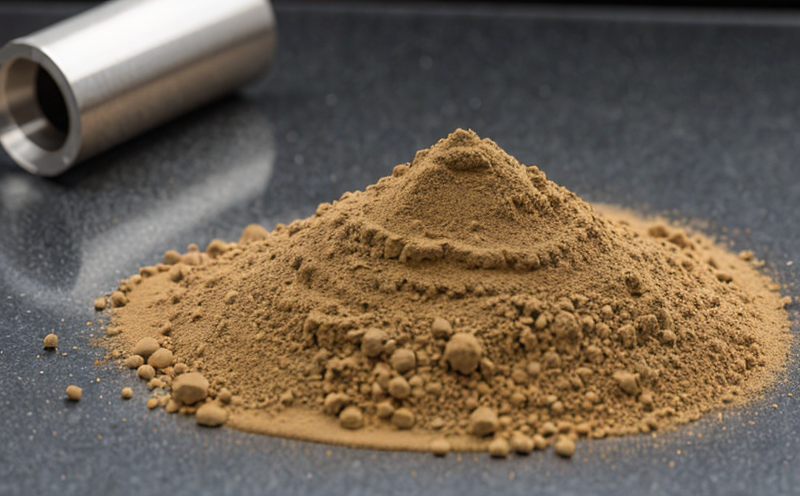ASTM B822 Particle Size Distribution of Metal Powders Testing
The ASTM B822 standard provides a robust framework for characterizing the particle size distribution (PSD) of metal powders, which is crucial in ensuring consistent quality and performance across various additive manufacturing processes. This testing ensures that the powder metallurgy used in 3D printing adheres to specified requirements, thereby enhancing the reliability and reproducibility of parts.
Understanding particle size distribution is essential because it directly influences the flowability, wettability, and processability of metal powders during additive manufacturing. Variations in these properties can lead to inconsistencies in part quality, such as porosity or warping, which are critical issues for industries like aerospace and medical device manufacturing.
The ASTM B822 method involves the use of laser diffraction technology to measure particle size distribution accurately. This technique is preferred over sieving methods due to its precision and ability to analyze particles across a wide range of sizes simultaneously. The test protocol requires the preparation of a sample by dispersing the powder in an appropriate medium, typically water or ethanol, ensuring that agglomerates are separated into individual particles.
Once prepared, the suspension is introduced into a laser diffraction instrument where it passes through a collimated beam of light. The scattered light intensity is measured as a function of angle and wavelength, which allows for the determination of particle size distribution. The test results provide detailed information on the percentage of particles falling within specific size ranges.
The precision and accuracy of ASTM B822 testing are further enhanced by the use of advanced software that can process raw data to generate comprehensive reports. These reports include graphical representations such as cumulative weight percent plots, which help visualize the distribution curve and identify any outliers or anomalies in the particle size range.
Quality managers and compliance officers rely on ASTM B822 testing to ensure that metal powders meet stringent quality standards. R&D engineers use this data to optimize powder properties for specific applications, while procurement teams leverage these tests to source high-quality materials consistently.
Applied Standards
- ASTM B822-19 Standard Test Method for Determining the Particle Size Distribution (PSD) of Metal Powders by Laser Diffraction.
- ISO/IEC 17025:2017 General Requirements for the Competence of Testing and Calibration Laboratories.
The ASTM B822 standard is widely recognized in the additive manufacturing industry, especially for metal powders used in processes like laser powder bed fusion (LPBF) and electron beam melting (EBM). Compliance with this standard ensures that laboratories meet international quality and safety standards.
Scope and Methodology
The scope of ASTM B822 testing encompasses the characterization of particle size distribution for metal powders intended for use in additive manufacturing processes. The methodology involves several key steps:
- Sample Preparation: The powder sample is dispersed in a suitable liquid medium, typically water or ethanol, to separate agglomerates into individual particles.
- Liquid Suspension: The prepared suspension is introduced into a laser diffraction instrument for analysis.
- Data Collection: Light scattering data are collected as a function of angle and wavelength, which allows the calculation of particle size distribution.
- Data Analysis: Software processes raw data to generate detailed reports, including graphical representations such as cumulative weight percent plots.
Use Cases and Application Examples
- Aerospace Industry: Ensuring that powder metallurgy used in manufacturing lightweight, high-strength components meets critical specifications for safety and performance.
- Medical Device Manufacturing: Guaranteeing the consistent quality of metal implants or tools produced through additive manufacturing to meet stringent regulatory requirements.
- Automotive Sector: Verifying that powder metallurgy adheres to exacting standards for producing intricate parts with minimal defects.
- Electronics Industry: Ensuring the reliability of metal components used in sensitive electronic devices by maintaining consistent particle size distribution.





